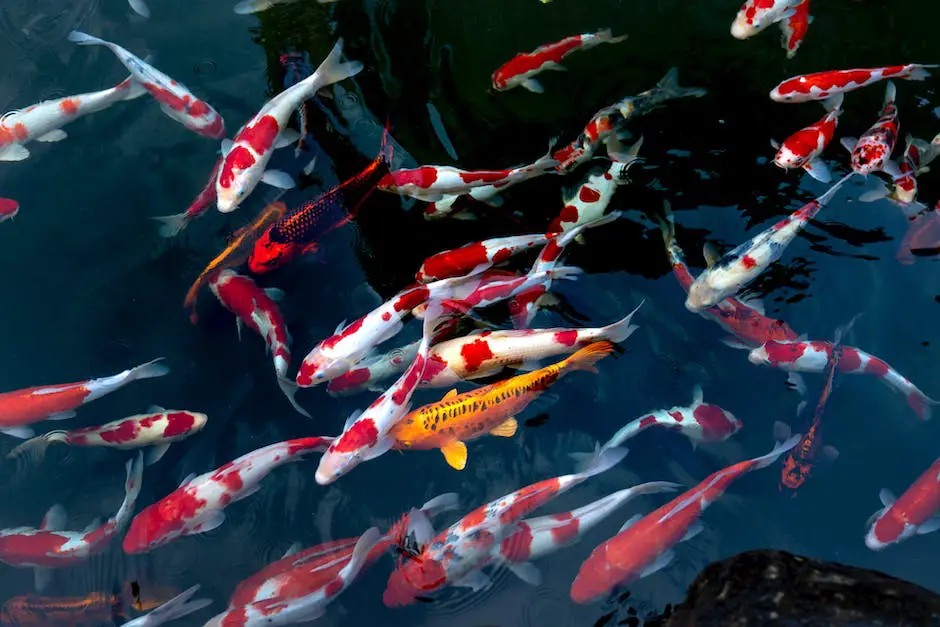Whether you’re an experienced angler or someone dipping their fishing line for the first time, understanding the fishing size limits in Oklahoma is a vital part of preserving our aquatic ecosystems. When we respect size limits, we support the health and sustainability of diverse species in their natural habitats. Discover the importance these regulations hold and the role you play as an angler. We will delve into the specifics, including size limits for various species, methods for accurate measurements, and the principles of responsible fishing practices. Let’s journey together into the heart of Oklahoma’s abundant waterways, fostering a better understanding and respect for our shared natural resources.
Understanding the Basics of Size Limits
Fishing Size Limits in Oklahoma: The Underpinning of Sustainable Angling
Fishing, an enchanting pastime that brings you closer to nature, provides an excellent outlet for unwinding and connecting with the world around us. Tossing a line into a sparkling Oklahoma lake or river is a serene experience that, at times, pays off with the catch of a lifetime. But even in this tranquil hobby, rules such as fishing size limits exist and are critically important.
To begin with, fishing size limits are regulations set by state wildlife and fisheries departments to control the size of fish that can legally be caught and kept. They may vary greatly, depending on the species of fish and the particular ecosystem. In Oklahoma, each kinds of fish, from bass to trout to catfish, has its own designated size limits.
Immediately, some might wonder: why bother with these seemingly meticulous details in what should be a leisurely pursuit? The answer lies in the critical role size limits play in sustaining our fish populations. They instantly become a lot less restrictive and a lot more valuable when viewed in this light.
Think of size limits as the guardians of sustainable fishing, ensuring that young, immature fish have a chance to reproduce before they hit somebody’s frying pan. This is vital because it protects our fish populations from being depleted and helps to keep our ecosystems vibrant and balanced.
Furthermore, size limits serve an underlying purpose of enabling the bigger, often older fish, to continue playing their ecological roles. These veterans are usually better spawners, producing more robust and healthy offspring than smaller, younger fish. By allowing these paragons to remain and flourish in our Oklahoma waters, we’re supporting the propagation of stronger generations of fish.
Size limits also deter overfishing, a damaging practice known to wreak havoc on fish populations worldwide. With the ever-growing popularity of recreational fishing, it’s all too easy for a species to be overharvested. Size limits can help mitigate this by reducing the chances of a particular species being overfished or wiped out.
Finally, for the angling enthusiasts, size limits offer the rousing thrill of ‘catch and release’ fishing – the adrenaline rush of reeling in a big one and the sense of accomplishment and respect for the environment when releasing your catch back into the wild.
It’s easy to view size limits as nothing more than speed bumps in an otherwise serene fishing trip. However, upon closer inspection, size limits embody the very soul of responsible, sustainable fishing. They protect our fish populations, allow us to enjoy the thrill of the reel for years to come and keep our beautiful Oklahoma waterways teeming with aquatic life — making every fishing trip a potential adventure.
So, next time when the fishing line tightens around that tell-tale tug, remember the importance of these humble regulations. They are not just about ensuring that future generations can share in the joy of fishing; they’re about respecting the balance of our natural world. And in this balance, we find the true spirit of fishing.

Specific Size Limits in Oklahoma
Exploring the Enigma of Oklahoma’s Fishing Size Limits
Delving into the heartland of America, Oklahoma promises a rich fishing experience with its assorted water bodies. But like any avid angler knows, hooking the delightful catch isn’t all just about the thrill. It’s also about understanding and respectfully following the local fishing size statutes which exist to help maintain healthy fish populations and habitats.
Taking a quick tour of the Oklahoma fishing laws, the first thing you’ll notice is the diversity in the size limits – a reflection of the variety of life in the state’s waters. For example, Oklahoma boasts of Largemouth Bass, but it is the exceptional prowess of the state’s wildlife department which specifies a minimum size of 14 inches, thus discerning the juveniles from the adults to sustain the species. Additionally, anglers need to remember, though the limit for Smallmouth and Spotted Bass is six in count, the protective size limit is 14 inches across the entire state.
Moving onto Channel and Blue Catfishes, which are native in these waters, the combined daily bag limit is 15, but with no specific size limit. However, the real delicacy – Flathead Catfishes, have a set daily limit of 5 regardless of size. Crappies, both Black and White, must be 10 inches long or over to take, with a limit of 37.
Sauger and Walleye fishing, rightly popular in the ‘Sooner State’, see an interesting dynamic. While the safeguarding size limit for these species is 14 inches, the Lake Texoma region presents an exception with a minimum length limit of 18 inches.
It is necessary to be clued up about these limitations as Oklahoma understands that classifying fish is essential for their survival. Thus, for paddlefish, a species that appeals to many for sport and food, harvests are only available from Dec 1st – Apr 30th and must be 30 inches and over, maintaining a healthy breeding population.
Last but not least, the trophy fish – the Alligator Gar. The fish demands a special mention due to their immense sizes, and because the permissible daily harvest limit is only one per angler throughout the state and year.
While showcasing your angling skills, remember the overarching prerequisites, of specific fishing size limits in Oklahoma. They are not just directions for display, but are regulations that ensure the fish continue to provide joy for future generations while conserving the diverse and beautiful ecological balance that Oklahoma is known for. These fishing rules are the walls of a constitution that exemplify responsible fishing practices – making Oklahoma’s hobbyists and professionals – guardians of aquatic life.

Photo by lespaulster11 on Unsplash
Consequences of Breaking Size Limits
Heading into Oklahoma’s freshwater world, it’s key to understand the ramifications of not adhering to size and bag limits.
After all, these guidelines have been established for a good cause, not just to thwart our fishing adventures.
As is often quoted, “rules are not necessarily sacred, principles are.”
So, let’s delve into what happens if someone is caught breaking size limits in Oklahoma.
From the sly trout to the lumbering bass, Oklahoma boasts a vibrant fishery inventory.
To maintain its richness, the Oklahoma Department of Wildlife Conservation (ODWC) deploys a vigilant team of game wardens.
Tasked with enforcing state fishing regulations, these wardens have the right to inspect any game, fish, or other wildlife, or contemplate its ‘parts’ held by any person, thus ensuring consistent adherence to the rules.
Stepping over size limits or exceeding bag limits can attract significant penalties.
The extent of fines and punishments usually depends on the severity of the violation.
For instance, under the Oklahoma Statutes, Title 29, Section 7-410, the fine for unlawfully catching, taking, or possessing fish is a minimum of $100 and can go up to $500 per count.
Let’s grasp the core fact that each fish is considered a separate count!
Seasoned anglers know well that fishing is more than just casting a line.
It’s about resilience, patience, and respect for nature.
Adhering to size limits is one aspect of this same reverence.
In the event if fishing gear gets snagged or fish are accidently hooked in a restricted area, the fish must be returned back to the water promptly and unharmed.
Decision-making wields heavy influence in recreational fishing, especially while deciding to keep or release certain fish.
The ODWC offers a well-designed booklet titled, “You Decide: Keepers or Clippers?” that serves as a handy reference for telling apart native game fish, hybrids, and non-native fish species in Oklahoma’s waters.
Breaking the fishing size or bag limit is viewed as a disregard for conservation efforts.
However, responsible anglers understand that these rules are not limiting but liberating.
They ensure the future of the game, guarantee the thrill of the catch for generations to come, and, most importantly, uphold the balanced sustenance of Oklahoma’s vibrant aquatic life.
The appeal of fishing lies equally in embarking on an aquatic adventure as in playing an active role in conservation.
To further embrace this role, anglers can report any violation of fishing laws to the ODWC Operation Game Thief.
This stride not only fetches a commendable pat on the back from all nature aficionados but can also lead to potential rewards.
In conclusion, “the charm of fishing is that it is the pursuit of what is elusive but attainable, a perpetual series of occasions for hope.”
Let’s pledge to adhere by the fishing size limits, for this hope to never perish, for us and for the generations to follow.
As the keepers of nature, it’s an irreplaceable responsibility that we conscientiously hold.

Responsible Fishing Practices
Navigating Oklahoma’s Fishing Regulations Responsibly
Any angler in the Sooner State knows the thrill of the catch is but one facet of the fishing experience. Understanding and respecting the diverse fish species found in Oklahoma’s waters is equally crucial, enriching the experience while also supporting local conservation efforts. Knowledge of each species’ specific size and bag limits, expertly enforced by vigilant game wardens, helps maintain healthy fish populations and sustains the natural equilibrium.
There’s a pretty simple rule of thumb: If a fish isn’t the right size, release it conscientiously. Just because a fish has been hooked doesn’t mean it has to be taken home. Understanding the correct methods of catch and release can significantly boost survival rates among fish, safeguarding precious populations.
For those accidentally holding an off-limit fish, the protocol is clear. Always release the fish back to the water as promptly and as unharmed as possible. Remember, ensuring an efficient, damage-minimizing release is a responsibility shared by all individuals who partake in this timeless pastime.
It’s not merely about protecting the fish, either. Penalties and fines for non-adherence to Oklahoma’s fishing regulations are not light. A lackadaisical attitude could lead to hefty fines – or worse. No outing is worth the risk of a lasting mark on a fishing record.
There’s a general consensus across the angling community. The thrill of this pastime lies in the pursuit of the ideal catch, not recklessly amassing as many fish as possible. A quote that best embodies this attitude is “The charm of fishing is that it is the pursuit of what is elusive but attainable, a perpetual series of occasions for hope.” It underscores the interplay of hope, anticipation, and knowledge that teems beneath the calm surface of fishing.
In line with this ideology, facing up to the responsibility of preserving the environment is crucial. Being vigilant about rules helps, but raising the alarm when necessary is key. Anyone noticing a violation of fishing regulations doesn’t just have the right but the duty to notify the ODWC Operation Game Thief. This community-responsibility attitude helps uphold this pastime’s innate respect for nature while preserving it for future generations.
Ultimately, fishing is more than just a hobby; it’s a symbiotic relationship with nature. As with any relationship, respect and understanding are key. Staying informed about fishing regulations, conscientiously practicing catch and release, and cooperating with conservation efforts turn any fishing enthusiast from a casual participant into a devoted steward of nature’s rich resources.
So grab your rod and reel, and step into the diversity and bounty of Oklahoma’s waters with a deeper appreciation for the delicate balance between angling enjoyment and ecological responsibility. You are not only a fisherperson but also a guardian of the water’s depth and the life it nurtures. Happy fishing!

Embracing responsible fishing practices and understanding the regulations in place, specifically the size limits, isn’t just about avoiding penalties. It’s a commitment to ensuring that the stunning diversity of species within Oklahoma’s unique aquatic environments continues to thrive for future generations. Learning how to accurately measure different types of fish, releasing those who do not meet size requirements, and understanding the effects of overfishing can lead to a much more enjoyable and fulfilling fishing experience. After all, fishing isn’t just about catching; it’s also about respect and appreciation for Mother Nature’s incredible aquatic wealth.



Welcome to our blog!